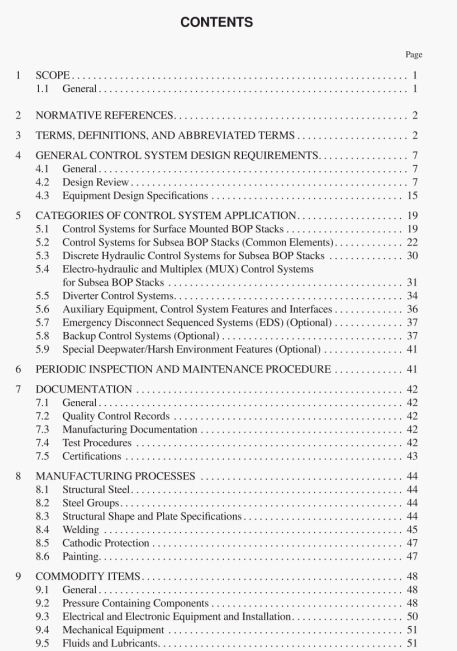API Spec 16D:2004 pdf download.Specification for Control Systems for Drilling Well Control Equipment and Control Systems for Diverter Equipment.
Densities for the various pressures at the ambient, isothermal temperature are to be based on NIST gas table data (http:1/web- book.nist.gov/chcmistryifluid.
.See 4.2.3.1 for Bottle Volume calculation using these Volumetric Efficiencies.
See Annex C tir example calculations.
4.2.3.1.4 Method C (Real Gas, Adiabatic Discharge, 1.1 Volume Design Factor (for Both Volume and Pressure Limited Discharge):
Method C (real gas. adiabatic discharge) is required for rapid discharge accumulators. Rapid-discharge accumulators are defined as accumulators required to satisfy their functional volume requirement in less than 3 mm. This includes dedicated shear (both surface and subsea slack-mounted), dead man system. autoshear. and some acoustic and special purpose accumulators. Method C may be used instead of either A or 13 for systems not requiring a rapid discharge.
Note that for a given accumulator volume, precharge conditions, and full-charge conditions. Methods B and C have the same stored hydraulic fluid. The difference between the method B and C is due to the difference between an adiabatic discharge which will cool the gas significantly for high-pressure ratios, and an isothermal discharge. Optimal accumulator sizing differences will occur because optimal precharge for an accumulator will be different when temperature effects are considered. Basically, the precharge pressure after adiabatic discharge. with the lower temperature and pressure that occurs with this discharge, will be slightly above the minimum required operating pressure. For Method adiabatic expansion shall be used for discharge pressure temperature relationship. This will be conservative with regard to available pressure. as accumulators will have heat transfer from the environment, hut it will occur over a period of time that cannot be accurately assessed.
Design charging pressure shall be the “pump start pressure” for accumulators subject to main hydraulic supply pressure fluctuations. Design charging pressure shall be the “pump shut-off pressure” for accumulators that are isolated by check valve(s) from the main hydraulic supply pressure fluctuations.
Method C’ Calculations:
For Method C, the general equations become:
4.2.3.2 Stored Hydraulic Fluid Volume
The stored hydraulic fluid volume shal be used in determining the pump system sizing and reservoir capacity required. Thestored hydraulic fluid volume is the hydraulic fluid stored in the accumulator from precharge condition to pump stop pressure.
4.2.4Reservoirs and Reservoir Sizing
4.2.4.1General
A suitable control fluid shall be selected in accordance with 9.5.
Water-based hydraulic fluids are usually a mixture of potable water and a water-soluble lubricant additive.When ambient temper-atures at or below freezing are expected, sufficient volume of ethylene glycol or other additive acceptable to the control systemmanufacturer shall be mixed with the water-based hydraulic fluid to prevent freezing.
API Spec 16D:2004 pdf download
